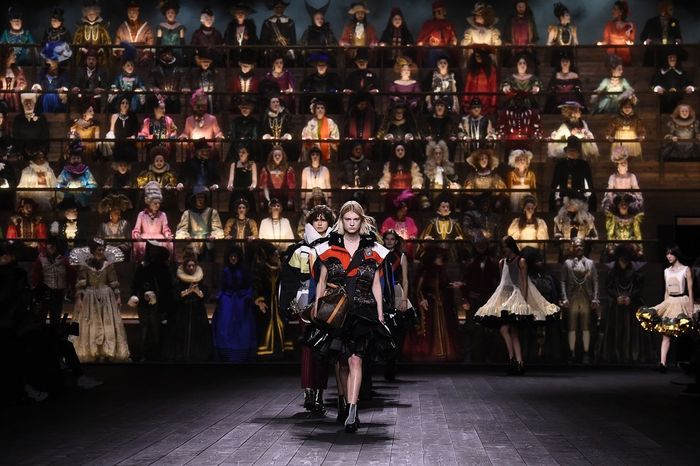Could coronavirus transform the art world?
With a surge of online artistic activity making art more accessible than ever, Erin Argun reflects on one of the potentially positive consequence of the pandemic.

With the COVID-19 pandemic sweeping through the globe, many of the most esteemed galleries and auction houses have shut their doors for the foreseeable future. Galleries and museums, however, have pledged to keep their audiences engaged throughout their indefinite closure by increasing their online and social media engagement. While it indeed seems like a strange time to be talking about art, the tumultuous impacts on art institutions during state-sanctioned periods of quarantine could, in fact, change the very way in which we experience and interact with art.
State-sanctioned periods of quarantine could change the very way in which we experience and interact with art.
Museums in Hong Kong have been forced to shut once more, amid a sharp increase in Coronavirus cases since the country relaxed their social distancing measures. A biennial exhibition in Sydney has closed after just ten days of its opening amid new calls for isolation. Closer to home, all major galleries in London have now closed their doors; Cambridge’s Kettle’s Yard and the Fitzwilliam are under temporary closure. But what does that mean for you, the avid art-lover, or someone looking to purge their boredom with a bit of aesthetic relief?
The bad news is we no longer have the freedom to roam aimlessly around collections, or eye the details of our favourite artworks in situ. The good news: we live in a digital age where most of these collections can be accessed online. It might not seem the same right now, but could this become the new normal?
We live in a digital age where most of these collections can be accessed online. Could this become the new normal?
After their closure following government guidelines last week, Tate have taken to their online and social media platforms to continue sharing art and ideas. A post on Tate’s Instagram called for comments to begin sharing people’s favourite artworks on their feed, alongside the hashtag #MuseumfromHome. A couple of days later, the gallery was pushing for an array of submissions from children: from self-portraits in the style of Van Gogh, to swirly patterns of shaving foam inspired by Gerhard Richter. One can only imagine that this was either to the joy of parents at a loss of things to do with their children at home, or total dismay at a shaving foam performance gone awry. In the spirit of ‘challenges’ circulating Instagram and other online platforms, Tate also welcomed submissions of witty ‘one-minute sculptures’ inspired by Erwin Wurm to be created with objects from the home, or garden.
While these may seem like small trivial attempts by the gallery group to keep their audiences engaged, and add a little colour and interest to our feeds, these posts and mini-projects are in fact changing the individual’s relation to art. These public social media platforms are free and widely accessible, and Tate (alongside many other major galleries and museums worldwide) are delivering bite-sized doses of art from their curators to our touch-screens. Curators are no longer having to think about the longevity of a collection or exhibition, but relaying narratives instantly and fluidly with the push of a button, potentially to be viewed for a mere twenty-four hour period as a ‘story’.
We are witnessing a demystifying of the act of art-making itself.
There is a demystifying of the act of art-making itself. It no longer seems like something momentous and unreachable, as the framed painting behind motion sensors has led us to believe. Art becomes an easy recreation: we can pick up a watering-can in the garden, take a snap on our phones of our desired ‘composition’ and hope we have been inventive enough to appear on the gallery’s feed. In fact, the ‘feed’ itself begins to take on a curated form, threading together the stories of artists, and pairing works of art symbiotically with poetry as a caption to a post.
The new emphasis placed on art institutions' online resources might just transform the art world, a world which has been deemed for time immemorial an exclusivist and bourgeois pastime, into a more accessible world for the masses. Art can be learnt about and even made from the sofa, rather than the at-times daunting gallery or studio. We don’t know when galleries and museums will re-open, but this air of uncertainty won’t cease with their return to ‘normality’.
Digital platforms are pushing unprecedented boundaries, creating new narratives and, maybe (and it’s a big maybe), rewriting art history itself. Viewers could cease to find interest in chronologically planned, canonised collections of physical gallery spaces. Perhaps the future of art curation, and thought itself, lies in the eclectic narratives made possible with social media. A Degas can be viewed next to my watering-can ‘one-minute sculpture’, next to a performance film by Faustin Linyekula, next to a shaving-foam work by my 8-year-old cousin. Opportunities seem endless, and could change ‘art’ itself in the uncertain future to come.
 News / Clare Hall spent over £500k opposing busway 24 December 2025
News / Clare Hall spent over £500k opposing busway 24 December 2025 Comment / The ‘class’ of Cambridge24 December 2025
Comment / The ‘class’ of Cambridge24 December 2025 News / Caius mourns its tree-mendous loss23 December 2025
News / Caius mourns its tree-mendous loss23 December 2025 News / Girton JCR publishes open letter expressing solidarity with Palestine25 December 2025
News / Girton JCR publishes open letter expressing solidarity with Palestine25 December 2025 Comment / Yes, I’m brown – but I have more important things to say22 December 2025
Comment / Yes, I’m brown – but I have more important things to say22 December 2025










